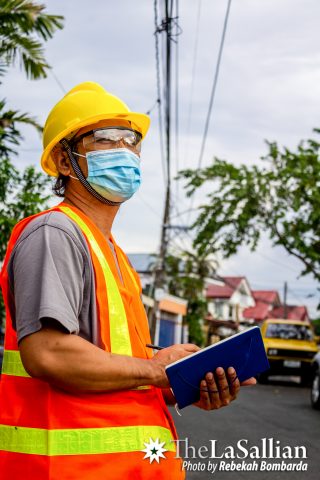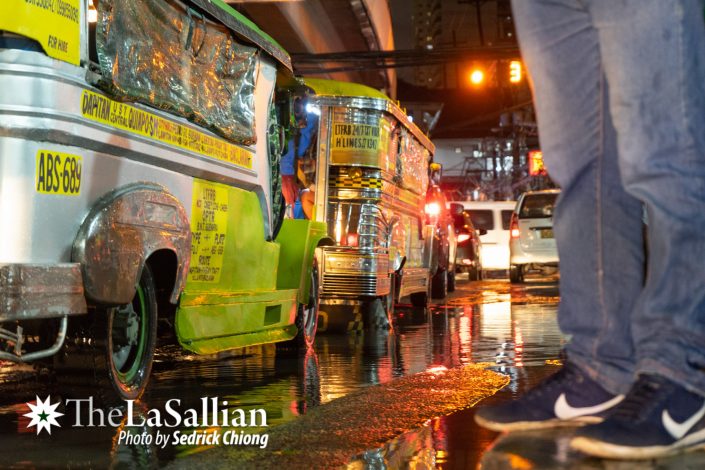From being the pioneer country that introduced the first ever metropolitan light rail system in Southeast Asia, the Philippines’ public transportation system has seen better days. Spending long hours in traffic and erratic breakdowns of existing train systems are only some of the common problems that commuters face. As lockdown restrictions eased over the past months, traffic jams and congested roads have started to resurface across the metro.
With new transportation issues posed by recent lockdowns, existing transportation operations and services that have already been proven to be unreliable have been forced to adapt, being made to follow the strict safety protocols implemented by the national government. Amid the current crisis, the challenge of molding Metro Manila’s transportation systems to conform to current demands lies on the shoulders of transportation engineers.

A decentralized system
Although the government has allotted a higher budget for the Department of Public Works and Highways and the Department of Transportation (DOTr) for 2020—receiving P582-billion and P101-billion, respectively—the country’s dismal state of transportation leaves much to be desired.
Patricia Mariano—a former project development officer at the DOTr who now serves as an advisor for German development agency Deutsche Gesellschaft für Internationale Zusammenarbeit—notes the country’s fragmented modes of transportation as one of the main problems. With dozens of private companies in the picture, commuters in the metro are offered a variety of road transportation options, but this “free-for-all” system can only satisfy the short-term needs of the public. In reality, this setup, saturated by “on-street competing operators”, makes for an inefficient system that is difficult to regulate because of its decentralized nature.
Mariano furthers that this system has resulted in a disorganized supply of low quality public transport service, which has led to dangerous and congested traffic situations. Brought about by the lack of investment in infrastructure for sustainable modes of mass transport, the absence of viable forms of public transportation has stimulated consumers to opt for private cars and motorcycles instead. This is further backed by the 2014 ASEAN Automotive Federation sales report which highlighted the Philippines as the fastest growing automobile and motorcycle market in Southeast Asia—ahead of Vietnam, Singapore, Malaysia, and Indonesia.
This certainly poses a problem: more vehicles on the road. To address this, the Metropolitan Manila Development Authority has doubled down on its enforcement of existing policies to limit the number of vehicles that pass along major thoroughfares such as EDSA. Regardless, silver bullet solutions can only go so far. Transporting 40 to 50 commuters with a single bus instead of 10 cars, for instance, is a small step that can drastically reduce the road congestion problems that have plagued the metro for years.
Hence, Dr. Alexis Fillone, a seasoned transportation engineer and a Full Professor from the Civil Engineering Department, urges to develop better public transport systems to reduce the need for private cars that would, in bulk, clog up the roads. There is no immediate solution, but to effectively mitigate the severe congestion, the focus must be shifted toward improving public transportation systems to be recognized as direct alternatives to private vehicles.
Reshaping systems
According to Fillone, Transportation Engineering deals with the “application of technical and scientific knowledge to improve the movement of people, goods, and services—be it on air, sea, or land.”
Involved in several projects across the country, Fillone has dealt with the reorganization of the traffic circulation system of the Port of Manila to facilitate the traffic flow of cargo trucks. At present, he is the project leader of the Sustainable Technology–Assisted Route Planning for Region VI project, which aims to “support the development of a sustainable local public transport route plan [that] integrates the air, road, and maritime transport network of Region VI using smart technologies.”
Among the many adjustments of existing transportation systems brought about by the pandemic, Fillone notes that the capacities of public transport vehicles have been significantly reduced to 30 to 50 percent due to physical distancing measures. “This considerable decline has resulted in a lower number of people being transported per vehicle and per hour,” he furthers.
In line with this, Fillone argues that the objective does not end with reducing the number of private vehicles on the road, but should also extend to the rehabilitation of the current system by introducing safer and climate-friendly public utility vehicles.
Simply shifting to walking and cycling, however, may not solve the country’s heavy traffic woes, as it poses road safety risks if proper measures are not in place. Existing bike lanes along EDSA, for example, are discontinuous and do not have barriers to protect cyclists from other vehicles, making them dangerous to navigate through. The passing of Renz Perez, a health worker, last August 23 after being hit by a pick up truck while riding his bicycle along Padre Burgos Ave. in Ermita, Manila exemplifies the dangers that cyclists face with the absence of public transportation systems that commuters normally rely on.
As such, Fillone identifies that the main challenge for transportation engineers is “how to design transportation systems that [complement] the arrangement of our cities and civic spaces” in order to ensure safety and efficiency. This way, public transport, walking, or cycling would become viable, or even preferable, options rather than as a last resort.

Calls for change
Commuters have been vocal with their calls for a reformed public transit system. In 2019, AltMobilityPH—a coalition of policy advocates for sustainable and inclusive transportation—lobbied for a magna carta bill for commuters’ basic rights. Their efforts came to fruition when Sen. Francis Pangilinan filed Senate Bill 775, dubbed the Magna Carta for Dignified Commuting, which pushes for building a safe, convenient, reliable, and affordable public transportation system. At present, the Senate and House versions of the bill are pending in Congress.
Commuters alone are not the only ones affected as millions of public transportation drivers have also struggled to cope with the pandemic’s aftereffects. Jobless for months, a growing number of jeepney drivers lining highways asking for alms from motorists proves how dire the situation has become.
